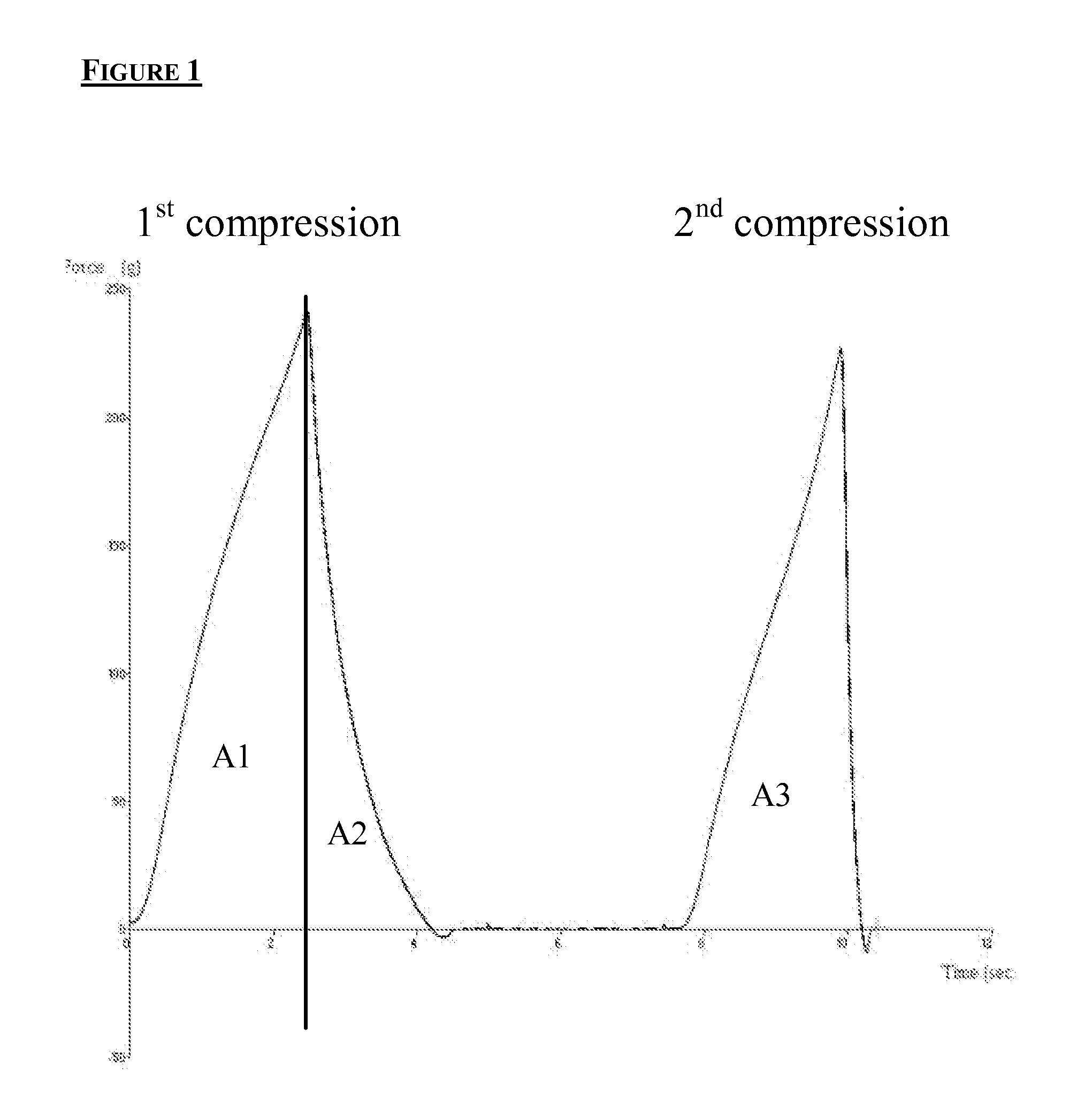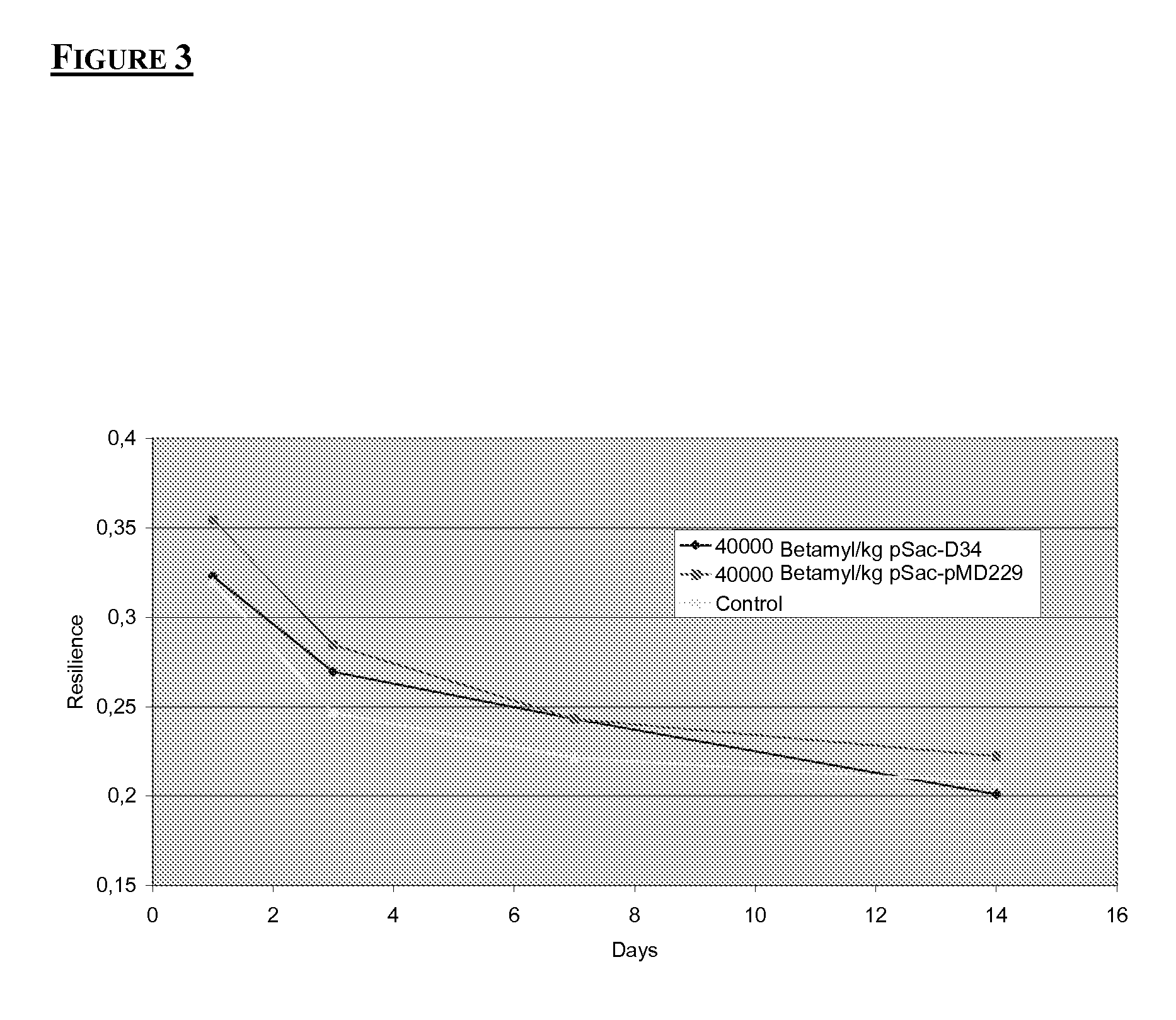Modified amylases from Pseudomonas species
a technology of amylases and pseudomonas, which is applied in the field of polypeptides, can solve the problems of increasing bread firmness, affecting bread staling, and affecting bread firmness,
- Summary
- Abstract
- Description
- Claims
- Application Information
AI Technical Summary
Benefits of technology
Problems solved by technology
Method used
Image
Examples
example 1
Cloning of PS4
[0368]Cloning of Pseudomonas sacharophila non-maltogenic exoamylase PS4 and the generation of plasmids pCSmta and pCSmta-SBD is described in WO 2005 / 003339, particularly Example 1.
[0369]Site directed mutagenesis (SDM) may be conducted using the methods described in WO 2005 / 003339, particularly in Example 2 of that document.
example 2
Multi SDM
[0370]The PS4 variants were generated using a QuikChange® Multi Site Directed Mutagenesis Kit (Stratagene) according to the manufactures protocol with some modifications as described.
Step 1: Mutant Strand Synthesis Reaction (PCR)
[0371]Inoculate 3 ml. LB (22 g / l Lennox L Broth Base, Sigma)+antibiotics (0.05 μg / ml kanamycin, Sigma) in a 10 ml Falcon tube
[0372]Incubate o / n 37° C., ca. 200 rpm.
[0373]Spin down the cells by centrifugation (5000 rpm / 5 min)
[0374]Poor off the medium
[0375]Prepare ds-DNA template using QIAGEN Plasmid Mini Purification Protocol[0376]1. The mutant strand synthesis reaction for thermal cycling was prepared as follow:
PCR Mix:
[0377]
2.5μl10X QuickChange ® Multi reaction buffer0.75μlQuickSolutionXμlPrimers(primerlength28-35bp→10pmolprimerlength24-27bp→7pmolprimerlength20-23bp→5pmol)1μldNTP mixXμlds-DNA template (200 ng)1μlQuickChange ® Multi enzyme blend (2.5 U / μl) (PfuTurbo ®DNA polymerase)XμldH2O (to a final volume of 25 μl)
[0378...
example 3
Transformation into Bacillus subtilis (Protoplast Transformation)
[0397]Bacillus subtilis (strain DB104A; Smith et al. 1988; Gene 70, 351-361) is transformed with the mutated plasmids according to the following protocol.
[0398]A. Media for Protoplasting and Transformation
[0399]
2 × SMMper litre: 342 g sucrose (1 M); 4.72 g sodiummaleate (0.04 M); 8:12 g MgCl2, 6H20 (0.04 M);pH 6.5 with concentrated NaOH. Distribute in50-ml portions and autoclave for 10 min.4 × YT (1 / 2 NaCl)2 g Yeast extract + 3.2 g Tryptone + 0.5 gSMMPNaCl per 100 ml. mix equal volumes of 2 × SMMPEGand 4 × YT. 10 g polyethyleneglycol 6000 (BDH)or 8000 (Sigma) in 25 ml 1 × SMM (autoclave for10 min.).
[0400]B. Media for Plating / Regeneration
[0401]
agar4% Difco minimal agar. Autoclave for 15 min.sodium succinate270 g / l (1 M), pH 7.3 with HCl. Autoclave for 15 min.phosphate buffer3.5 g K2HPO4 + 1.5 g KH2PO4 per 100 ml.Autoclave for 15 min.MgCl220.3 g MgCl2, 6H2O per 100 ml (1 M).casamino acids5% (w / v) solution. Autoclave for ...
PUM
| Property | Measurement | Unit |
|---|---|---|
| temperatures | aaaaa | aaaaa |
| temperature | aaaaa | aaaaa |
| temperatures | aaaaa | aaaaa |
Abstract
Description
Claims
Application Information
 Login to View More
Login to View More - R&D
- Intellectual Property
- Life Sciences
- Materials
- Tech Scout
- Unparalleled Data Quality
- Higher Quality Content
- 60% Fewer Hallucinations
Browse by: Latest US Patents, China's latest patents, Technical Efficacy Thesaurus, Application Domain, Technology Topic, Popular Technical Reports.
© 2025 PatSnap. All rights reserved.Legal|Privacy policy|Modern Slavery Act Transparency Statement|Sitemap|About US| Contact US: help@patsnap.com



